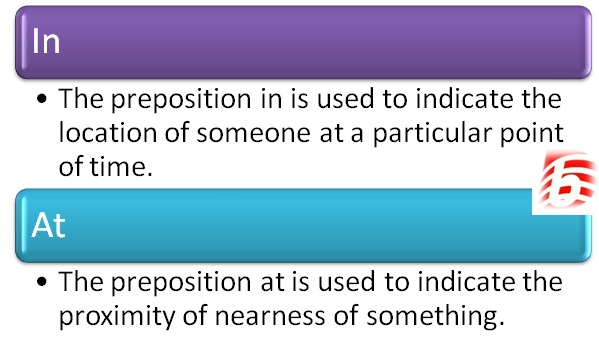In vs At
Both in and at are prepositions used in English grammar to describe the location of a noun. Although they may appear similar, their usage differs. For example, consider the phrases “in the house” and “at the college.” Both expressions describe the location of a noun: “house” and “college,” respectively.
What does In mean?
The preposition “in” is used to indicate the location of someone at a specific point in time. It conveys the idea of being well within something. For instance, in the sentence “He was in the church when I went to his home,” the person was within the location called “church” when his friend visited his home. The Oxford English Dictionary defines “in” as “Expressing the situation of something that is or appears to be enclosed or surrounded by something else.” An example of this is the sentence “She saw her face in the mirror.” However, this definition is just one of several provided by the Oxford English Dictionary.
What does At mean?
The preposition “at” is used to indicate the proximity or nearness of something. For example, in the sentence “The dog was at the gate,” the preposition “at” implies the closeness of the dog to the gate. Unlike “in,” “at” does not always convey the idea of being well within something. In the sentence “He was in the canteen at the railway station,” the preposition “at” does not imply that the canteen is well within the railway station but only suggests that it is near or attached to it. The Oxford English Dictionary defines “at” as “Expressing location or arrival in a particular place or position.” An example of this is the sentence “They stopped at a motel on their way to New York.”
Key Takeaways
- In and at are both prepositions used to describe the location of a noun.
- In is used to indicate the location of someone at a specific point in time and conveys the idea of being well within something.
- At is used to indicate the proximity or nearness of something and does not always convey the idea of being well within something.
